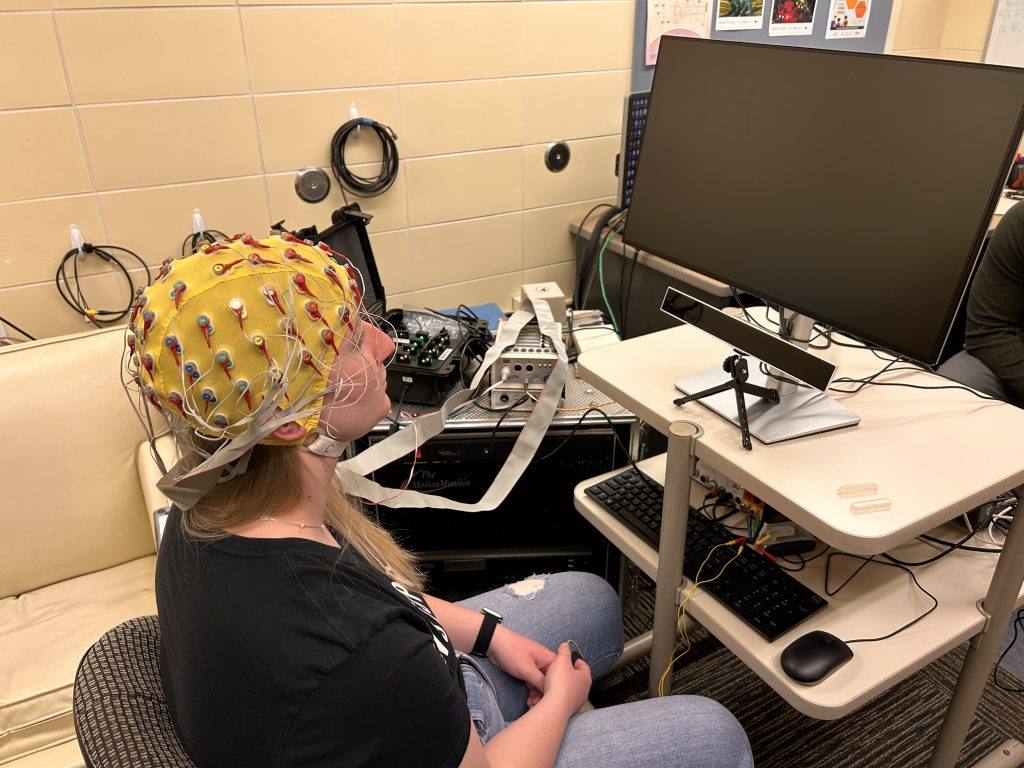SPIRE-EIT 2024
Summer Program for Interdisciplinary Research and Education – Emerging Interface Technologies
The Neural Basis for Curiosity
Faculty: Dr. Elizabeth Stegemoller, Kinesiology
Graduate mentor: Aron Nakama
Title: The Neural Basis for Curiosity
Short title: Curiosity EEG
REU Interns: Lydia Lonzarich, Sophie Meronek, and Harrison Brown
What makes an individual curious? Almost every human has a personal understanding of curiosity, the motivation it causes to seek and wonder, and the continued drive toward developing interests. And yet, we do not have a firm understanding of how to reliably induce curiosity in learning environments and how to maintain curiosity in an attempt to harness curiosity’s apparent benefits. There exists a strong body of evidence to suggest that limited curiosity inductions through trivia and Virtual Reality environmental exploration causes measurable memory enhancement as well as temporally linked physiological phenomena. My thesis project plans to fully characterize the different facets of curiosity in terms of these physiological signatures through Electroencephalography (EEG), Galvanic Skin Response, and Pupilometry. I will then use those characterizations to manipulate curiosity in virtual classroom environments with the intent to increase the frequency of curiosity induction. Wireless EEG headsets will provide the physiological feedback necessary to determine the successful induction of proper curiosity states. I am looking forward to having curious undergrads come together to help me build the virtual environment, develop reliable manipulations in a controlled environment, and help to gather and manage large data sets. I believe this project to be self-motivating as each student will be able to explore their own curiosity.

